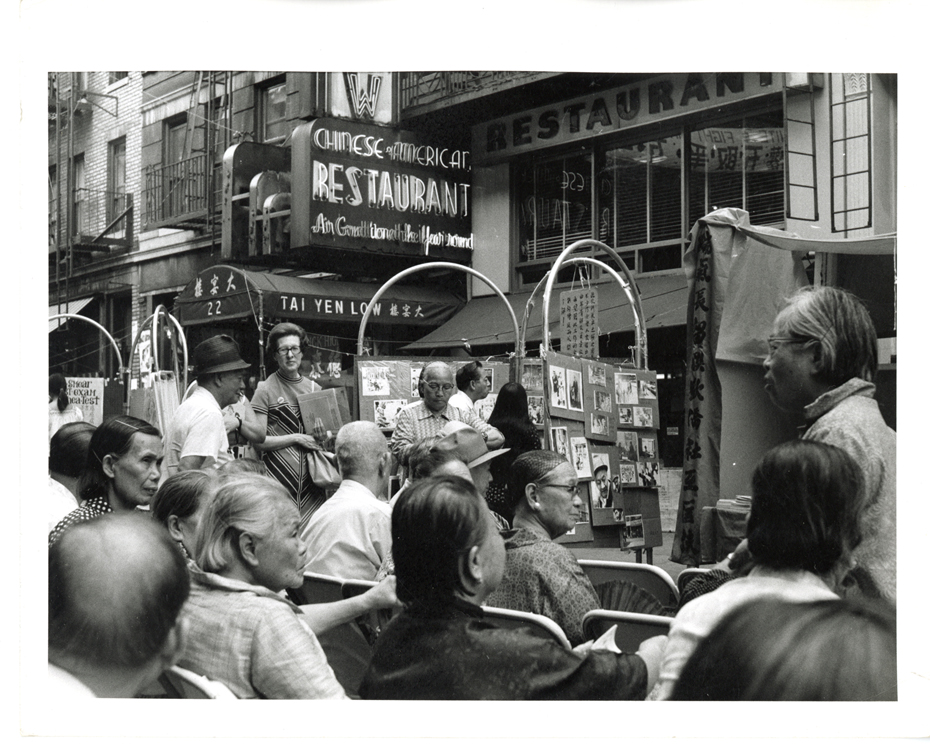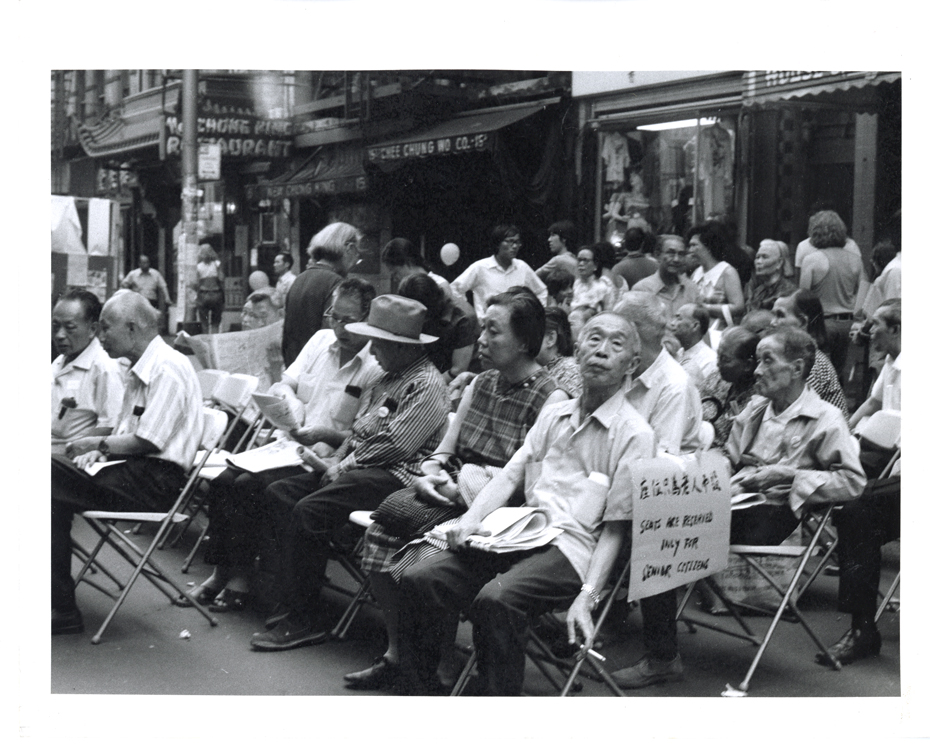In the summer of 1971, a sea of folding chairs lined Mott and Pell streets, which for ten days were closed to traffic so that seniors and families could be seated while waiting for free health screenings administered by over a hundred medical volunteers and students during New York Chinatown’s first health fair. The first two photographs capture community members attending this very first fair, organized by Asian American student and community activists inspired by a broader movement among civil rights activists to bring health care to their underserved communities. Eight booths were set up using city-owned mobile units, and youth volunteers served as translators, facilitating care previously inaccessible for Chinese-speaking seniors and recent immigrants due to language and cost barriers. Respecting longstanding cultural practice, one booth was reserved for Chinese herbal medicine, which some Chinatown residents utilized to treat their ailments in lieu of visiting a doctor. The great need demonstrated by the community response and the extent to which test results revealed that conditions went untreated led organizers to institute the health fair as an annually recurring event, captured in subsequent photographs here. In the same year, they also established a more permanent solution, the Chinatown Health Clinic (now the Charles B. Wang Community Health Center), initially run entirely by volunteer doctors, nurses, social workers, and students out of a church on Mott Street. For supplies and other expenses, the clinic solicited funding support directly from the community and fundraising drives over local Chinese-language radio were at times broadcast in garment factories, laundries, and restaurants. Donations were often small—“$5 from one seamstress, $5 from another one”—but they added up and enabled the clinic to stay open and continue serving the health needs of increasing members of the Chinatown community.
Read阅读Read阅读Read阅读Read阅读Read阅读Read阅读Read阅读Read阅读Read阅读Read阅读Read阅读Read阅读Read阅读Read阅读Read阅读Read阅读Read阅读Read阅读Read阅读Read阅读Read阅读Read阅读Read阅读Read阅读Read阅读Read阅读Read阅读Read阅读Read阅读Read阅读Read阅读Read阅读Read阅读Read阅读Read阅读Read阅读Read阅读Read阅读Read阅读Read阅读Read阅读Read阅读Read阅读Read阅读Read阅读Read阅读Read阅读Read阅读Read阅读Read阅读Read阅读Read阅读Read阅读Read阅读Read阅读Read阅读Read阅读Read阅读Read阅读Read阅读Read阅读Read阅读Read阅读Read阅读
Bringing Health Care to NYC Chinatown
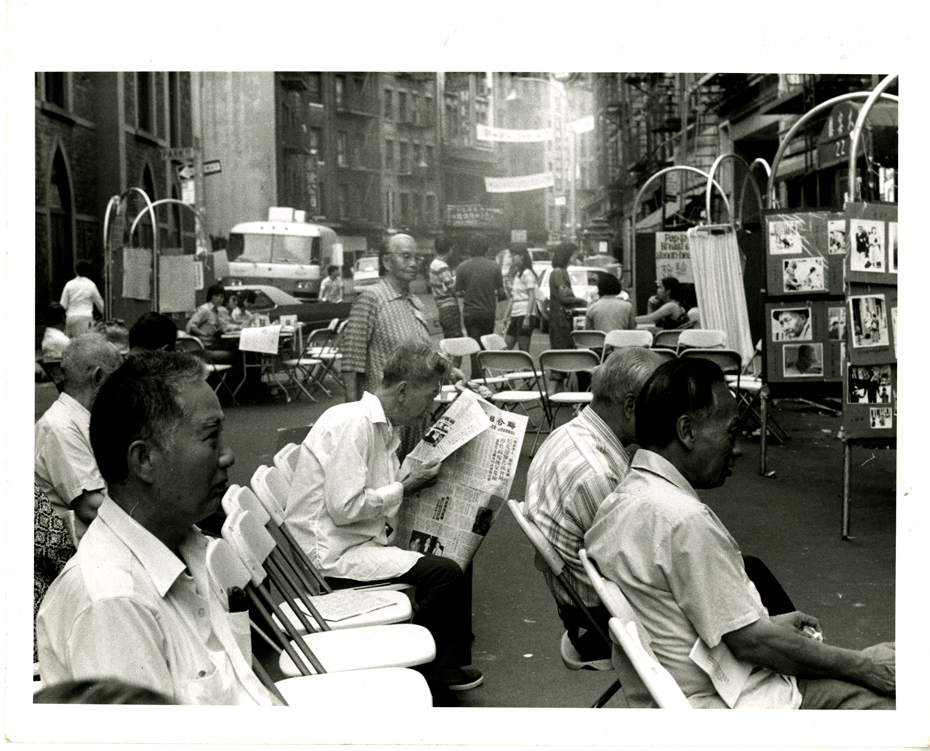
2013.018.011 Photograph taken at the first Chinatown Health Fair on Mott Street at the intersection of Mosco Street in summer 1971. The seated men were waiting for some of the free screening tests (TB Tine, blood pressure, drawing blood, etc.) provided by over 100 medical volunteers and college students trained to administer these simple tests. White folding chairs line the street. Museum of Chinese in America (MOCA) Basement Workshop Collection.
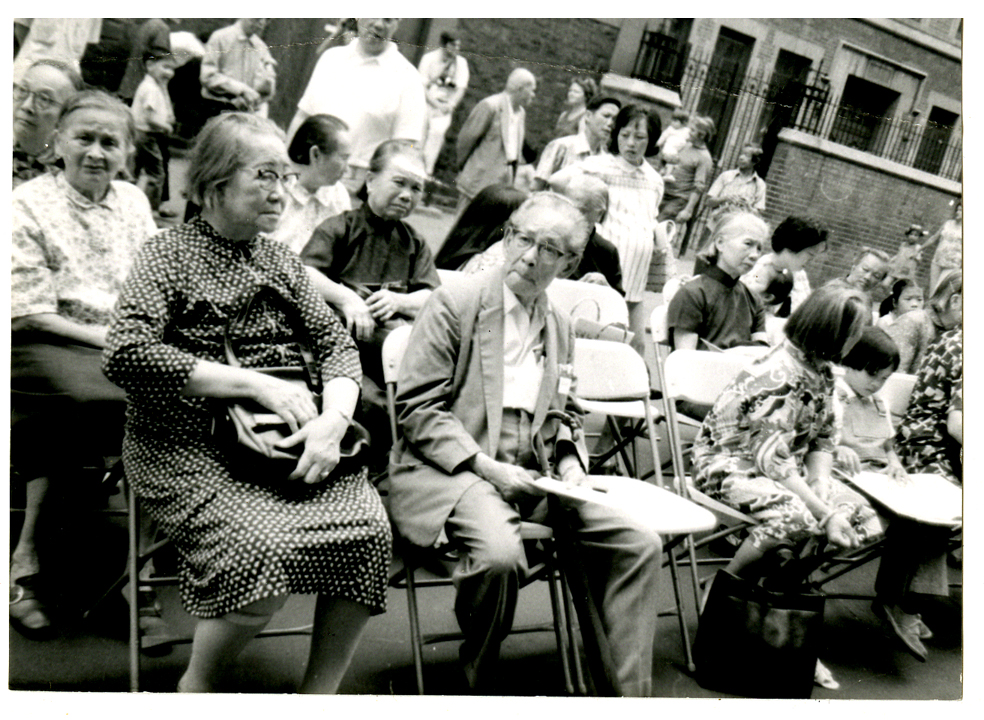
2013.018.090 A group of seniors sitting in folding chairs outside of the Church of the Transfiguration on Mott Street in New York's Chinatown. They are waiting for free screening tests provided during the Chinatown Health Fair, ca. 1971. Museum of Chinese in America (MOCA) Basement Workshop Collection.
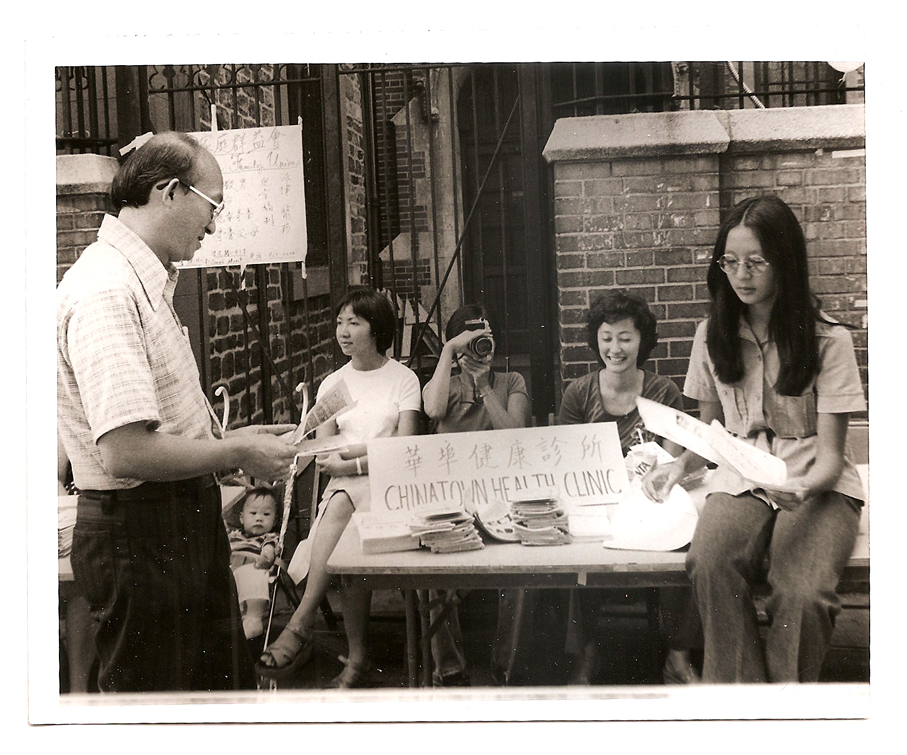
2014.029 Volunteers looking to expand health services outreach to the community at a Chinatown Health Clinic booth, likely outside its first location at a church on Mott Street. Photograph taken by Emile Bocian, ca. 1970s. Courtesy of Emile Bocian, Museum of Chinese in America (MOCA) Collection.
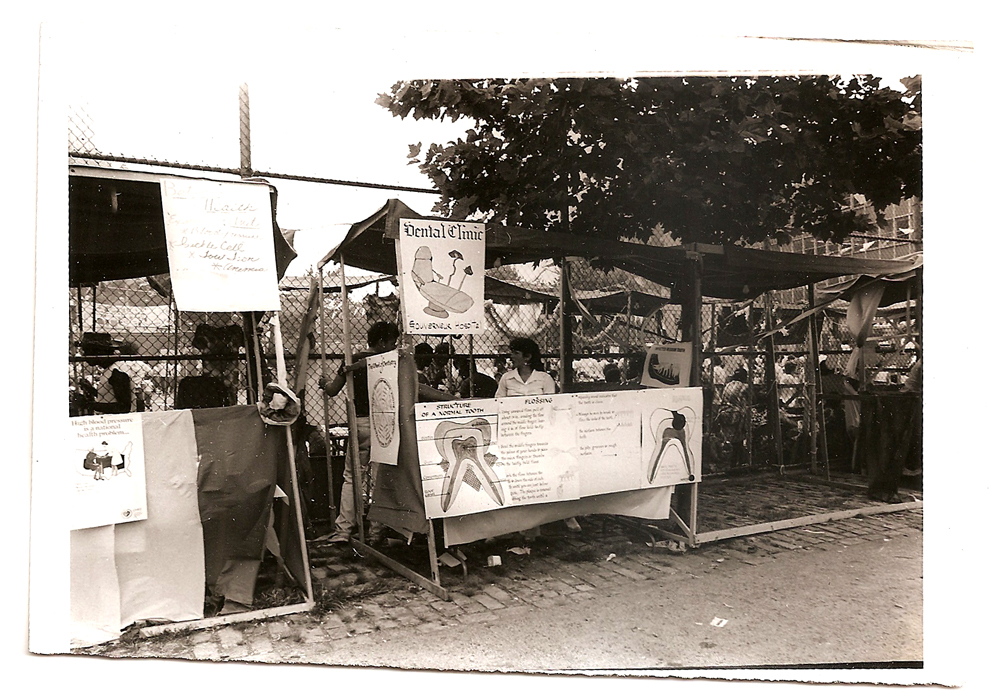
2014.029 Volunteers manning a Dental Clinic booth at a New York Chinatown Health Fair. During this time, working Chinatown residents had to take off work and wait long wait times to receive affordable dental care available in other neighborhoods, leading many to not seek or receive regular dental care. Photograph taken by Emile Bocian, ca. 1970s. Courtesy of Emile Bocian, Museum of Chinese in America (MOCA) Collection.
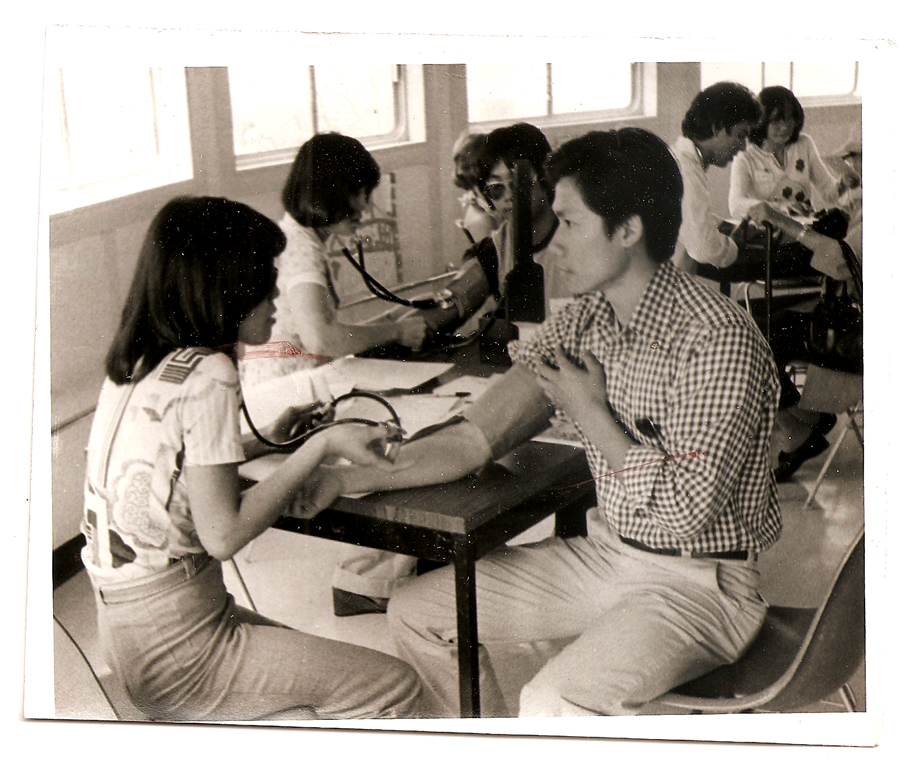
2014.029 Volunteers providing health screenings at a New York Chinatown Health Fair. Photograph taken by Emile Bocian, ca. 1970s. Courtesy of Emile Bocian, Museum of Chinese in America (MOCA) Collection.
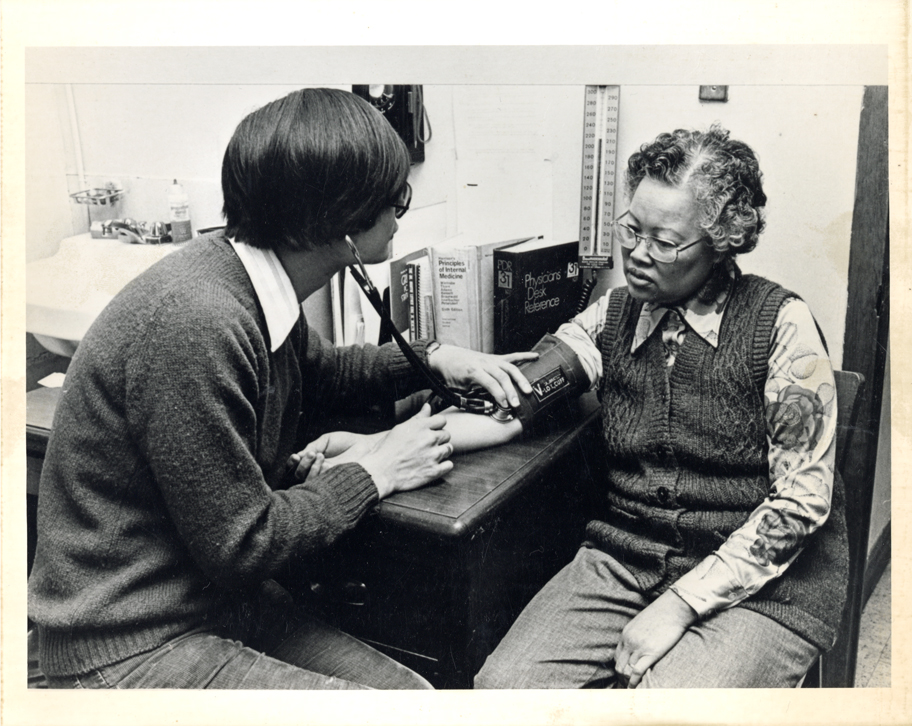
A doctor screening a senior for hypertension at the Chinatown Health Clinic, ca. 1970s. Courtesy of Jim Dong, Museum of Chinese in America (MOCA) Collection.
